Letting Go Exercise for Fiber Artists and Crafters: Make an Intentional Mistake
A mistake left in a piece can become a quiet act of acceptance, a reminder that beauty is not found in flawlessness but in honesty, in effort, and in the hand of the maker.
I came here today to write something new for THREADSTACK, but I didn’t know what I was going to write about. Then a couple of things converged, and I knew that I wanted to share this Craft to Heal exercise, which is a light adaptation of the Letting Go #6 exercise from my book Hook to Heal.
Some background: I wrote Hook to Heal ten years ago, creating exercises for using crochet to heal, grow, and connect. I am now rewriting it, chapter by chapter, over the next year, to expand it to other fiber arts and crafts.
Note: I had set this up as a year-long workshop series but unfortunately there wasn’t enough interest to afford it in that form so I’m pivoting. I’m working on the chapters, which will be available for sale individually, and hoping to set up small Zoom groups every month at a lower price point for those interested.
In May, I’m working on editing the Letting Go chapter.
And this morning, over in Chat, I saw that
offered a wonderful creative prompt to “make something bad on purpose.” I won’t copy the entire prompt here but if you don’t know her work on Substack, go check it out - she offers great ideas and information for creatives, particularly neurodivergent creatives.Seeing that, while working on editing this chapter, made me want to share the Intentional Mistake exercise.
Intro to Letting Go in Crafting
You can read the intro to the Letting Go Chapter of Hook to Heal here:
“If we want to improve our own quality of life through crafting, we have to learn to let go. We have to stop seeking perfection. We have to stop saying that where we are at is not enough. We can find ways to strive to make our best work without beating ourselves up for its perceived flaws. We do this by letting go of controlling the end product and focusing on the creative process. And there are many, many ways to do this through fiber arts.”
Letting Go: Intentional Mistake Exercise for Crafters
The exercise
In this exercise, you will intentionally put one glaring mistake into an item that you are making and leave it there.
The purpose
Many people feel that their work must be “perfect” and are dissatisfied with any little mistake that they see. The practice of allowing mistakes in the work will help release you from this perpetual feeling that things could always be done better and let you appreciate the beauty of things that you make just the way that they are.
Your work doesn’t need to be perfect and neither do you. Our imperfections are amazing.
Exercise In depth
Consider how you feel about mistakes in your work. If they bother you, examine why they bother you. What beliefs do you hold about what a mistake says about you? How do you feel when you see mistakes in someone else’s work? Do you hold others to the same high standards that you hold yourself to? Think about the voice in your head that belittles your mistakes; who does that voice belong to? What would be the worst thing that might happen if you allowed mistakes into your work?
Exercise steps:
Select a project for this exercise. It could be something you’re already working on or a new project but either way it should be something that you’re excited about working on and either keeping for yourself or giving to someone else. Don’t make it a throwaway project since that misses the point of the exercise.
Choose an error to make. You will find some examples below this exercise. Make a note in the pattern where you’re going to place the error.
Crochet the pattern. When you get to the note you’ve made, intentionally make the mistake. Pay attention to how this makes you feel.
Finish the project. Keep it in a place where you can see it. Notice if the mistake seems obvious to you and whether or not it bothers you.
Show the work to someone else. See if they say anything about the mistake. Notice what you’re thinking as they look at your work.
IDEAS: TYPES OF ERRORS TO PLAY AROUND WITH
Some examples of the types of mistakes you could put into your work for this exercise include:
Improperly joining yarn or thread. For example, in crochet or knitting, you could put a knot in the yarn if you don’t usually do this. In embroidery or sewing, you might tie off a thread visibly on the front of the work instead of neatly on the back.
Improperly finishing ends. In crochet or knitting, leave a tail of yarn poking through the fabric instead of weaving it in securely. In macramé, leave one cord’s tail longer or frayed. In needlefelting, don’t blend an edge fully so the base fiber peeks through.
A single incorrect stitch or row. In crochet, that might mean a double crochet where a treble should be. In knitting, it could be purling instead of knitting one stitch. In embroidery, you could reverse the direction of a satin stitch. In weaving, misplace the shuttle path for one row.
Adding or missing a stitch, knot, or section. This might be one extra stitch or one too few in a row or round. In quilting, you might misalign one seam. In macramé, skip a knot in a repeating pattern.
Starting with the wrong number of stitches or foundation. In crochet or knitting, this might require compensating with increases or decreases later. In weaving, you could skip a warp thread at the beginning and adjust for it later. In sewing, cut a piece slightly off-pattern and work it into the design.
Planned but misplaced shaping. Increasing or decreasing the wrong amount or in the wrong row or section. In quilting, this might show up as one triangle rotated incorrectly. In embroidery, accidentally mirroring part of a motif.
Unexpected color changes. Changing colors mid-row instead of at the beginning of a new row. In quilting or weaving, swapping a fabric or thread color in a block or stripe. In embroidery, using the wrong shade for one small section.
Using an inconsistent material or tool. For example, using a slightly different type or weight of yarn, thread, or fabric in just one section of the project. This could be substituting a different fiber content (like mixing wool and cotton), switching to a different size crochet hook, needle, or punch needle for part of the work, or including a scrap fabric with a clashing print in quilting or sewing.
Misaligning a pattern element. Intentionally placing one motif, square, or stitch slightly off from its intended position—rotating a quilt block the wrong way, centering an embroidery motif unevenly, misplacing a row of weaving, or sewing an appliqué piece off-center. This disrupts symmetry or visual flow in a small but noticeable way.
Introducing irregular texture or tension. You might vary the tension in one area of your knitting, allow loose loops to form in punch needle or weaving, leave a macramé knot bulky, or felt one section less thoroughly than the rest. In embroidery, you could deliberately make one stitch longer or shorter than it should be. These subtle variations shift the feel and appearance of the piece.
Variation examples for different crafts:
EXERCISE TIPS TO KEEP IN MIND
Make a mistake that is large enough to be noticeable in your project but not so big that it will ruin the functionality of the piece. For example, you don’t want to change a row of single crochet to a row of double treble crochet in a garment because it will affect fit, but you could change a row of single crochet to a row of half double crochet with less impact on function.
Or, alternatively, make a dramatic mistake, with intentional awareness that function will be compromised but aesthetics might be more interesting.
Noticing is the key thing here. Notice the mistake. Notice how it makes you feel to make a mistake. Notice how you feel when others see your mistake.
Prepare an affirmation for accepting your mistake. “My work is valuable and wonderful even when it has errors” is something you could remind yourself as you work on this exercise.
Taking it further:
If mistakes in your work are something that bother you then it might be worthwhile to do some research into different cultural beliefs that view errors in work differently.
For example, there is the Japanese concept of wabi sabi, wherein the imperfection of an item is not only acceptable but is actually what makes the item most valuable.
Likewise, there’s a wives’ tale that Amish women always put one mistake in every quilt they make because they believe that aiming for perfection is a mockery to God. That tale turns out to likely be a myth but it’s a concept worth exploring as an alternative viewpoint if you’re a perfectionist.
Similarly, In Islamic art, artists traditionally avoided depicting human forms and instead created intricate, mathematically complex geometric patterns. However, it's often said, though debated among scholars, that artisans would intentionally introduce a small mistake in their work to reflect the belief that only God is perfect. Whether or not this was a formal practice, the sentiment behind it still resonates: perfection is divine, and we, as humans, are not meant to attain it.
You might also look at traditions like visible mending, which has roots in many cultures, where instead of hiding flaws, the repair is made boldly and beautifully. A patch on a worn spot or a bright line of stitches across a tear becomes part of the story of the item, not a flaw to be corrected but a feature to be honored.
In some African American quilting traditions, improvisation and irregularity are key parts of the design, not deviations from it. These choices can be expressions of creativity, individuality, and cultural identity. They remind us that there is more than one standard for beauty, and that perfection isn't the only or even the most meaningful goal in creative work.
When we allow space for imperfection in our creative work, we also allow space for ourselves: to be human, to grow, to be present in the process rather than fixated on the outcome. A mistake left in a piece can become a quiet act of acceptance, a reminder that beauty is not found in flawlessness but in honesty, in effort, and in the hand of the maker. Let your work reflect not just your skill, but your story.
Did you enjoy this article? The work takes work. Support it if you are able:


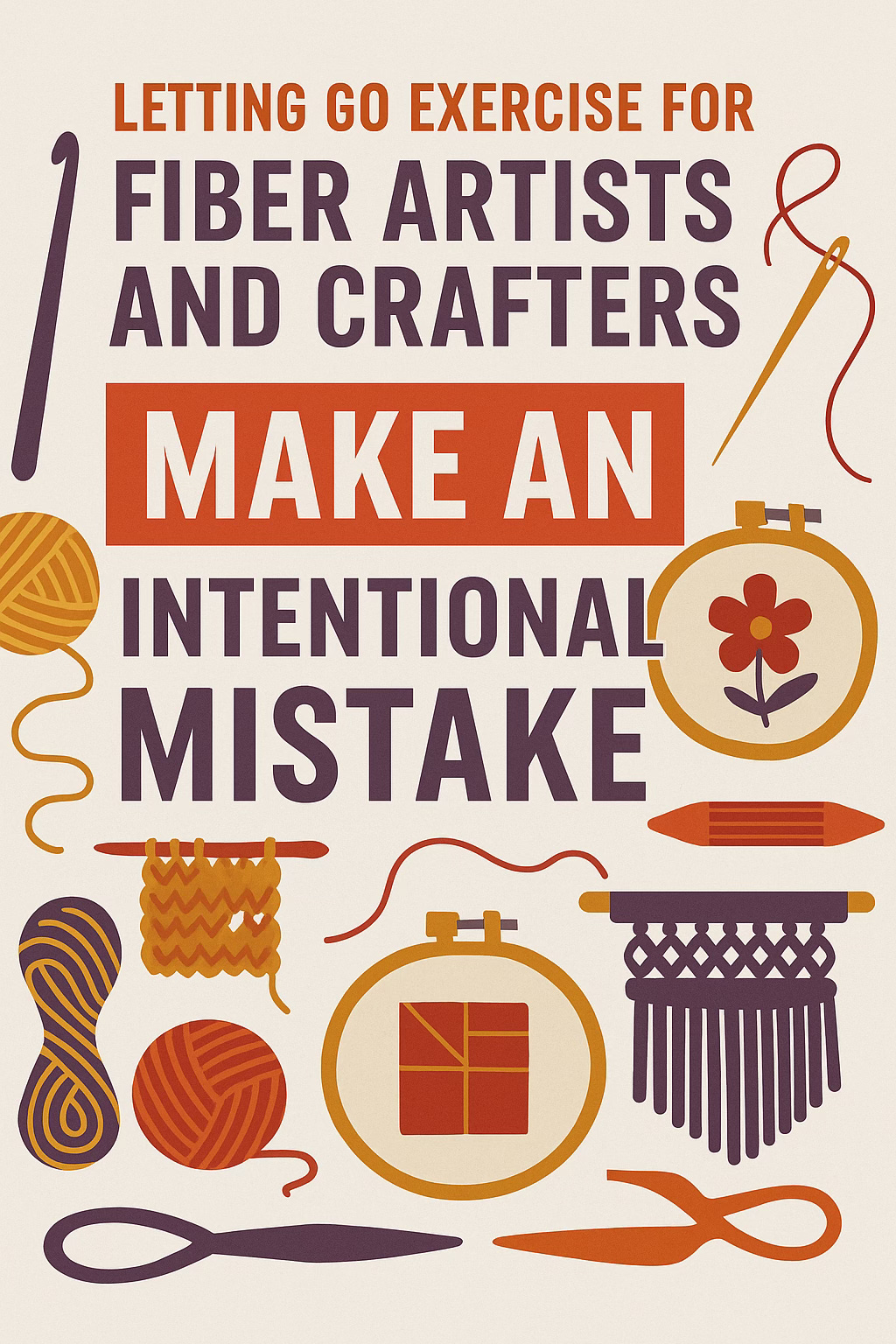


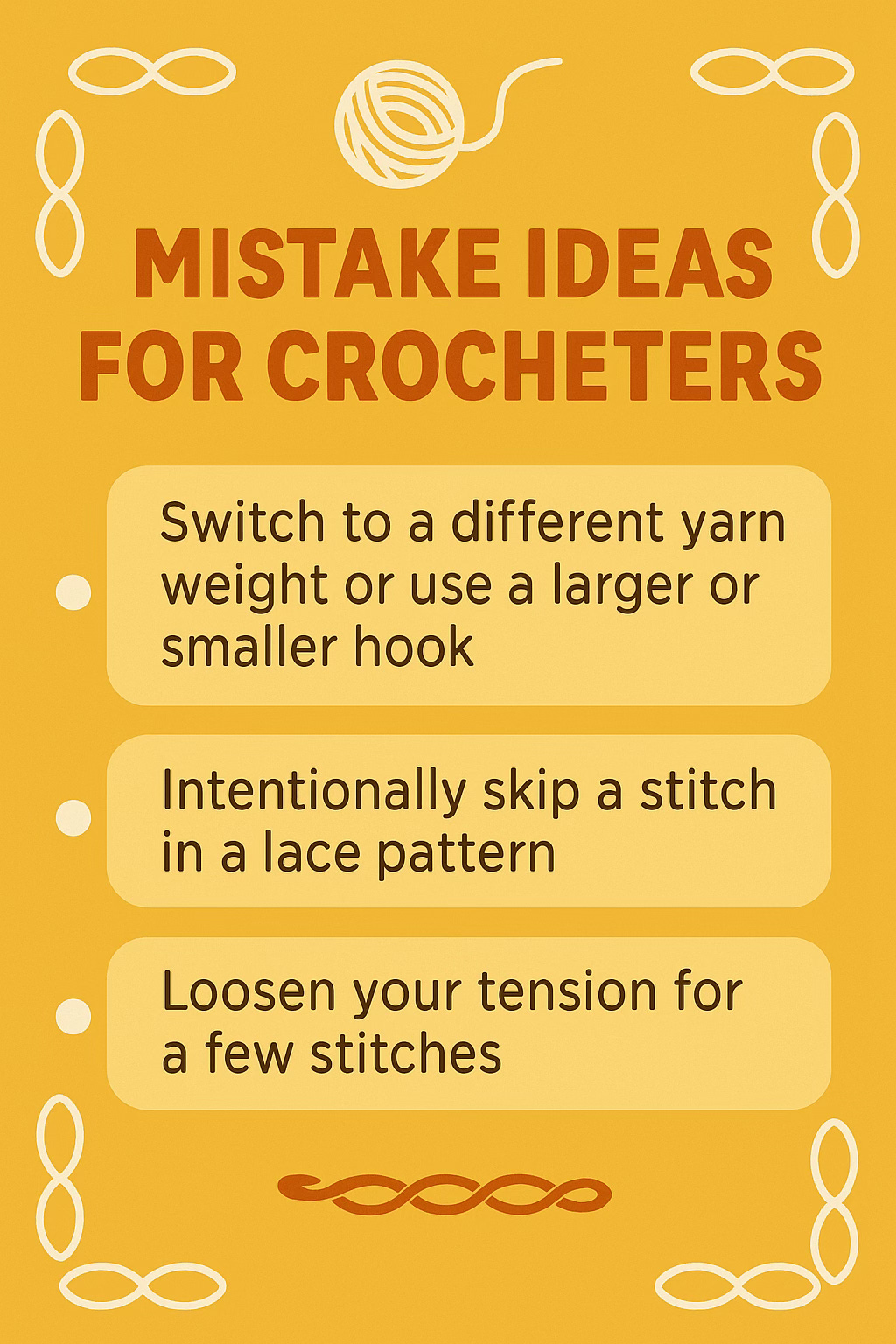
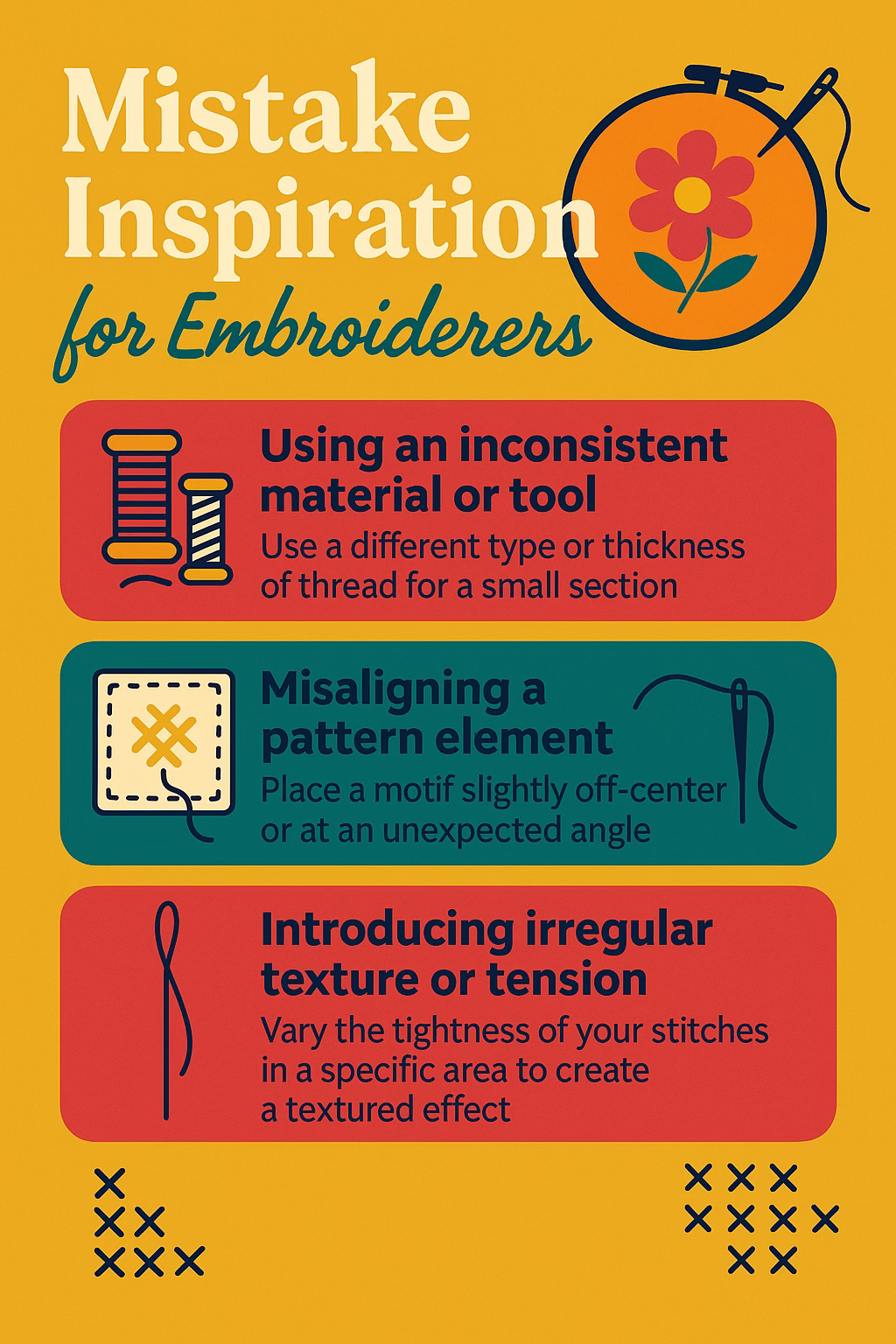
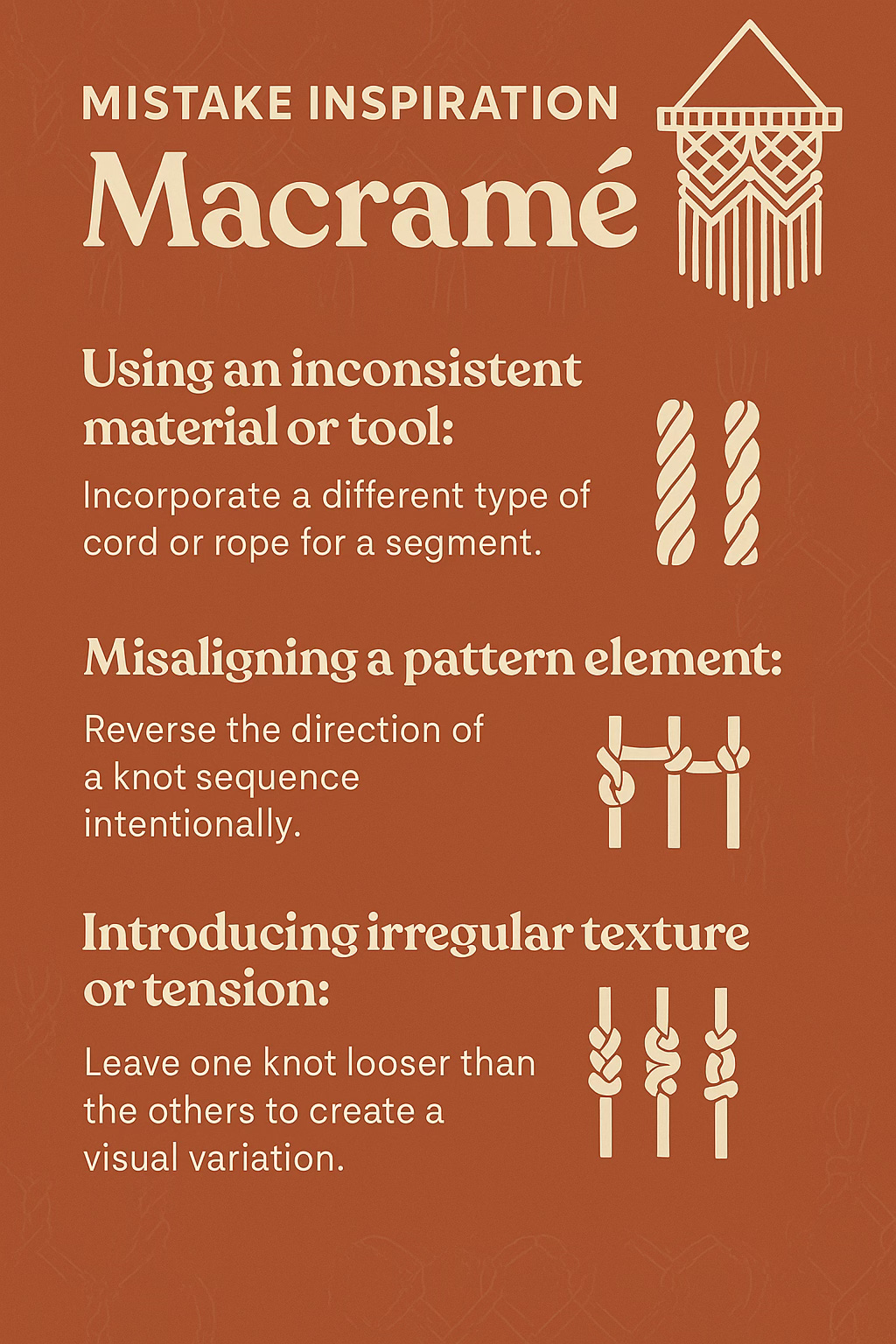
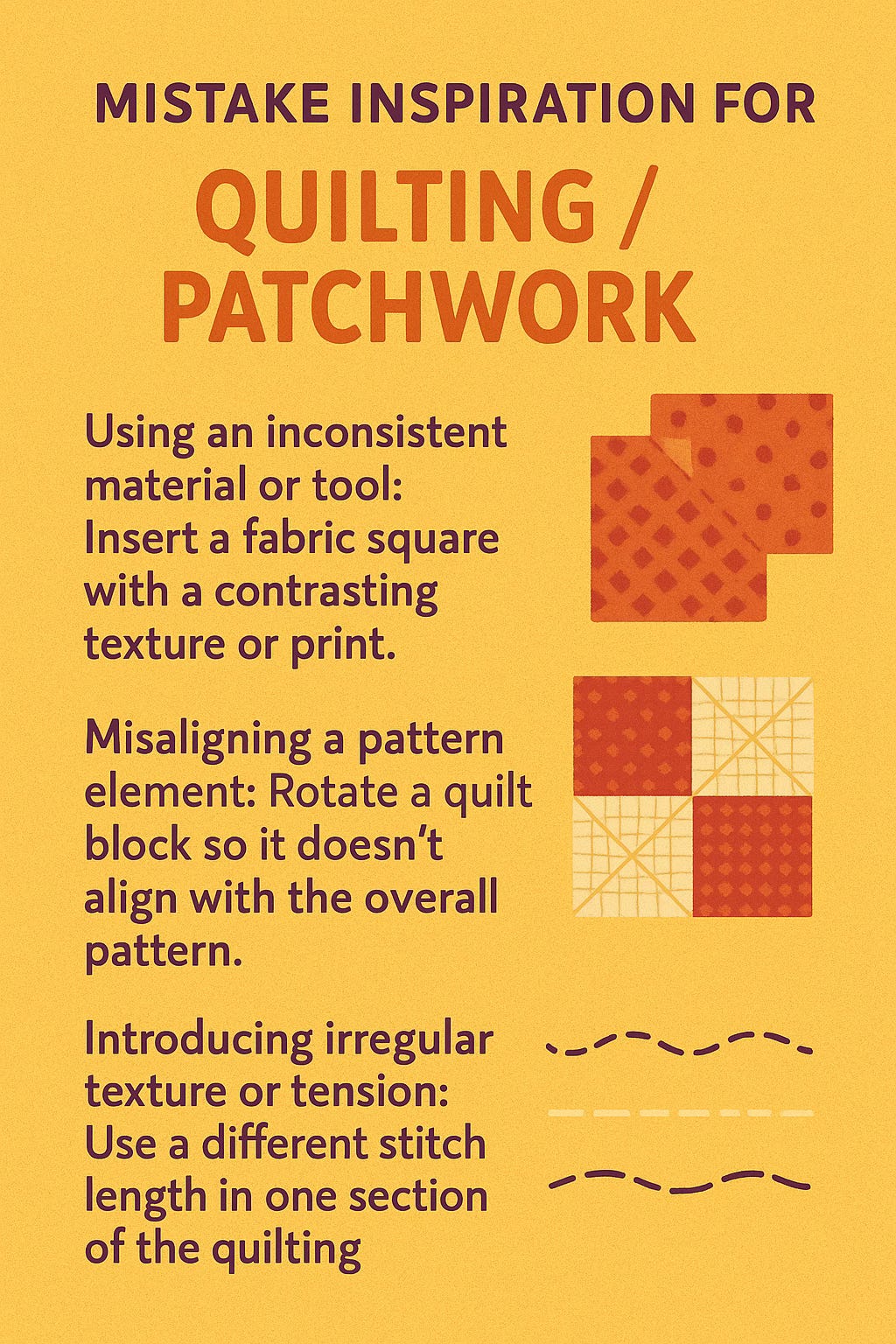


I love this so much, and it's given me an idea...!
I’ve tried this yesterday. I had been carefully blending colours in a crochet piece (using up old yarn) but picked a totally different colour for the next ball. Been living with it since then. I don’t hate it, but not sure I love it yet either. I’m definitely not going back to change it, cos this yarn does not like to be frogged! 😂